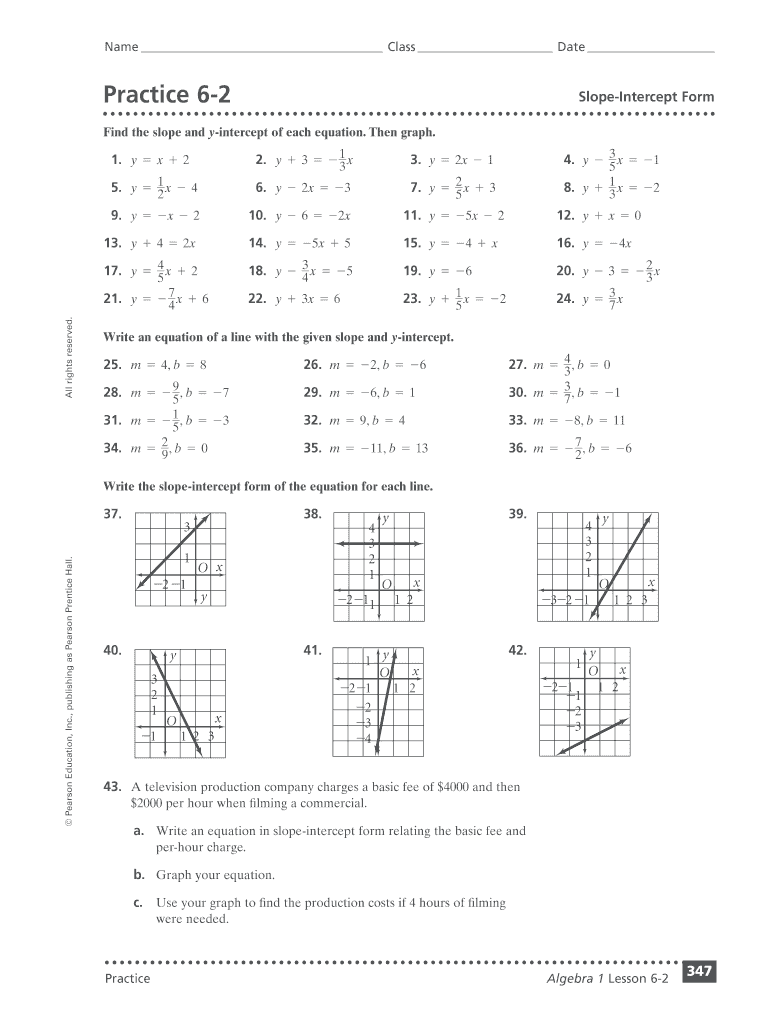When working with linear equations, one of the most commonly used forms is the slope-intercept form, which is written as y = mx + b. Converting equations to slope-intercept form allows us to easily identify the slope and y-intercept of the line, making it easier to graph and analyze.
One way to convert equations to slope-intercept form is by isolating the y variable on one side of the equation. This involves rearranging the equation so that it is in the form y = mx + b, where m represents the slope and b represents the y-intercept.
Let’s take a look at some examples of converting equations to slope-intercept form through a worksheet:
Example 1: Convert the equation 2x – 3y = 6 to slope-intercept form.
First, we need to isolate the y variable. We can do this by rearranging the equation:
-3y = -2x + 6
Dividing by -3 on both sides, we get:
y = 2/3x – 2
Therefore, the equation 2x – 3y = 6 in slope-intercept form is y = 2/3x – 2.
Example 2: Convert the equation 4y + 8x = 16 to slope-intercept form.
Again, we need to isolate the y variable by rearranging the equation:
4y = -8x + 16
Dividing by 4 on both sides, we get:
y = -2x + 4
So, the equation 4y + 8x = 16 in slope-intercept form is y = -2x + 4.
By practicing converting equations to slope-intercept form through worksheets, you can improve your understanding of linear equations and how to graph them. This skill is essential in various fields such as mathematics, physics, and engineering.
Overall, converting equations to slope-intercept form is a fundamental concept that can help you better analyze and interpret linear equations. With practice, you can become more proficient in converting equations and applying them to real-world problems.
